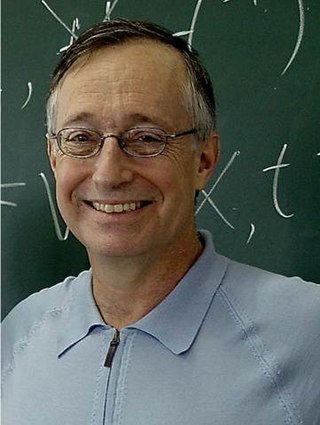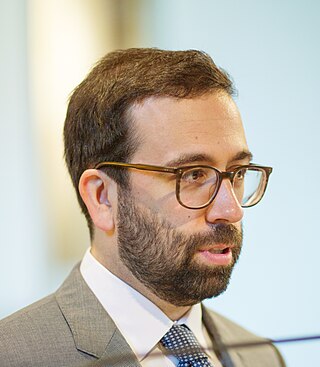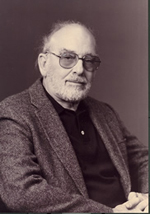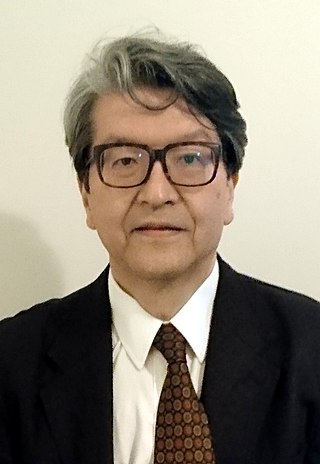Related Research Articles

Joseph Eugene Stiglitz is an American New Keynesian economist, a public policy analyst, and a full professor at Columbia University. He is a recipient of the Nobel Memorial Prize in Economic Sciences (2001) and the John Bates Clark Medal (1979). He is a former senior vice president and chief economist of the World Bank. He is also a former member and chairman of the Council of Economic Advisers. He is known for his support for the Georgist public finance theory and for his critical view of the management of globalization, of laissez-faire economists, and of international institutions such as the International Monetary Fund and the World Bank.

New Keynesian economics is a school of macroeconomics that strives to provide microeconomic foundations for Keynesian economics. It developed partly as a response to criticisms of Keynesian macroeconomics by adherents of new classical macroeconomics.

Nicholas Kaldor, Baron Kaldor, born Káldor Miklós, was a Cambridge economist in the post-war period. He developed the "compensation" criteria called Kaldor–Hicks efficiency for welfare comparisons (1939), derived the cobweb model, and argued for certain regularities observable in economic growth, which are called Kaldor's growth laws. Kaldor worked alongside Gunnar Myrdal to develop the key concept Circular Cumulative Causation, a multicausal approach where the core variables and their linkages are delineated. Both Myrdal and Kaldor examine circular relationships, where the interdependencies between factors are relatively strong, and where variables interlink in the determination of major processes. Gunnar Myrdal got the concept from Knut Wicksell and developed it alongside Nicholas Kaldor when they worked together at the United Nations Economic Commission for Europe. Myrdal concentrated on the social provisioning aspect of development, while Kaldor concentrated on demand-supply relationships to the manufacturing sector. Kaldor also coined the term "convenience yield" related to commodity markets and the so-called theory of storage, which was initially developed by Holbrook Working.

In economics, nominal rigidity, also known as price-stickiness or wage-stickiness, is a situation in which a nominal price is resistant to change. Complete nominal rigidity occurs when a price is fixed in nominal terms for a relevant period of time. For example, the price of a particular good might be fixed at $10 per unit for a year. Partial nominal rigidity occurs when a price may vary in nominal terms, but not as much as it would if perfectly flexible. For example, in a regulated market there might be limits to how much a price can change in a given year.
In finance, arbitrage pricing theory (APT) is a multi-factor model for asset pricing which relates various macro-economic (systematic) risk variables to the pricing of financial assets. Proposed by economist Stephen Ross in 1976, it is widely believed to be an improved alternative to its predecessor, the Capital Asset Pricing Model (CAPM). APT is founded upon the law of one price, which suggests that within an equilibrium market, rational investors will implement arbitrage such that the equilibrium price is eventually realised. As such, APT argues that when opportunities for arbitrage are exhausted in a given period, then the expected return of an asset is a linear function of various factors or theoretical market indices, where sensitivities of each factor is represented by a factor-specific beta coefficient or factor loading. Consequently, it provides traders with an indication of ‘true’ asset value and enables exploitation of market discrepancies via arbitrage. The linear factor model structure of the APT is used as the basis for evaluating asset allocation, the performance of managed funds as well as the calculation of cost of capital. Furthermore, the newer APT model is more dynamic being utilised in more theoretical application than the preceding CAPM model. A 1986 article written by Gregory Connor and Robert Korajczyk, utilised the APT framework and applied it to portfolio performance measurement suggesting that the Jensen coefficient is an acceptable measurement of portfolio performance.
In finance and economics, systematic risk is vulnerability to events which affect aggregate outcomes such as broad market returns, total economy-wide resource holdings, or aggregate income. In many contexts, events like earthquakes, epidemics and major weather catastrophes pose aggregate risks that affect not only the distribution but also the total amount of resources. That is why it is also known as contingent risk, unplanned risk or risk events. If every possible outcome of a stochastic economic process is characterized by the same aggregate result, the process then has no aggregate risk.

Paul Robert Milgrom is an American economist. He is the Shirley and Leonard Ely Professor of Humanities and Sciences at the Stanford University School of Humanities and Sciences, a position he has held since 1987. He is a professor in the Stanford School of Engineering as well and a Senior Fellow at the Stanford Institute for Economic Research. Milgrom is an expert in game theory, specifically auction theory and pricing strategies. He is the winner of the 2020 Nobel Memorial Prize in Economic Sciences, together with Robert B. Wilson, "for improvements to auction theory and inventions of new auction formats".

Ricardo A. M. R. Reis is a Portuguese economist and the A. W. Phillips professor of economics at the London School of Economics. In a 2013 ranking of young economists by Glenn Ellison, Reis was considered the top economist with a PhD between 1996 and 2004., and in 2016 he won the Germán Bernácer Prize for top European-born economist researching macroeconomics and finance. He writes a weekly op-ed for the Portuguese newspaper Jornal de Notícias and Expresso, and participates frequently in economic debates in Portugal.

The overlapping generations (OLG) model is one of the dominating frameworks of analysis in the study of macroeconomic dynamics and economic growth. In contrast to the Ramsey–Cass–Koopmans neoclassical growth model in which individuals are infinitely-lived, in the OLG model individuals live a finite length of time, long enough to overlap with at least one period of another agent's life.
In economics, incomplete markets are markets in which there does not exist an Arrow–Debreu security for every possible state of nature. In contrast with complete markets, this shortage of securities will likely restrict individuals from transferring the desired level of wealth among states.

David Cass was a professor of economics at the University of Pennsylvania, mostly known for his contributions to general equilibrium theory. His most famous work was on the Ramsey–Cass–Koopmans model of economic growth.
The Sonnenschein–Mantel–Debreu theorem is an important result in general equilibrium economics, proved by Gérard Debreu, Rolf Mantel, and Hugo F. Sonnenschein in the 1970s. It states that the excess demand curve for an exchange economy populated with utility-maximizing rational agents can take the shape of any function that is continuous, has homogeneity degree zero, and is in accordance with Walras's law. This implies that the excess demand function does not take a well-behaved form even if each agent has a well-behaved utility function. Market processes will not necessarily reach a unique and stable equilibrium point.
Lionel Wilfred McKenzie was an American economist. He was the Wilson Professor Emeritus of Economics at the University of Rochester. He was born in Montezuma, Georgia. He completed undergraduate studies at Duke University in 1939 and subsequently moved to Oxford that year as a Rhodes Scholar. McKenzie worked with the Cowles Commission while it was in Chicago and served as an assistant professor at Duke from 1948 to 1957. Having received his Ph.D. at Princeton University in 1956, McKenzie moved to Rochester where he was responsible for the establishment of the graduate program in economics.
Turnpike theory refers to a set of economic theories about the optimal path of accumulation in a system, depending on the initial and final levels. In the context of a macroeconomic exogenous growth model, for example, it says that if an infinite optimal path is calculated, and an economic planner wishes to move an economy from one level of capital to another, as long as the planner has sufficient time, the most efficient path is to quickly move the level of capital stock to a level close to the infinite optimal path, and to allow capital to develop along that path until it is nearly the end of the desired term and the planner must move the capital stock to the desired final level. The name of the theory refers to the idea that a turnpike is the fastest route between two points which are far apart, even if it is not the most direct route.

The neoclassical synthesis (NCS), neoclassical–Keynesian synthesis, or just neo-Keynesianism was a neoclassical economics academic movement and paradigm in economics that worked towards reconciling the macroeconomic thought of John Maynard Keynes in his book The General Theory of Employment, Interest and Money (1936). It was formulated most notably by John Hicks (1937), Franco Modigliani (1944), and Paul Samuelson (1948), who dominated economics in the post-war period and formed the mainstream of macroeconomic thought in the 1950s, 60s, and 70s.
The Cass criterion, also known as the Malinvaud–Cass criterion, is a central result in theory of overlapping generations models in economics. It is named after David Cass.

Katsuhito Iwai is a Japanese economist and critic. He has studied the theory of money, macro dynamics, evolutionary economics, philosophy of corporations, fiduciary law, and the history of sociology. His work includes the book, Disequilibrium Dynamics, and many articles published in academic journals. He has also written books and articles in newspapers and magazines for the general public on a wide variety of subjects ranging from global capitalism, post-modernity, civil society, money and language to literature and movies. His keen observations and analysis of the works of Shakespeare, Marx, J. S. G. Boggs, and Ihara Saikaku have established him as one of the foremost essayists in Japan.

Macroeconomic theory has its origins in the study of business cycles and monetary theory. In general, early theorists believed monetary factors could not affect real factors such as real output. John Maynard Keynes attacked some of these "classical" theories and produced a general theory that described the whole economy in terms of aggregates rather than individual, microeconomic parts. Attempting to explain unemployment and recessions, he noticed the tendency for people and businesses to hoard cash and avoid investment during a recession. He argued that this invalidated the assumptions of classical economists who thought that markets always clear, leaving no surplus of goods and no willing labor left idle.
Precautionary saving is saving that occurs in response to uncertainty regarding future income. The precautionary motive to delay consumption and save in the current period rises due to the lack of completeness of insurance markets. Accordingly, individuals will not be able to insure against some bad state of the economy in the future. They anticipate that if this bad state is realized, they will earn lower income. To avoid adverse effects of future income fluctuations and retain a smooth path of consumption, they set aside a precautionary reserve, called precautionary savings, by consuming less in the current period, and resort to it in case the bad state is realized in the future.
Sudhakar Rao Aiyagari was an Indian-born economics professor at the University of Rochester. He had previous been a leading research economist at the Minneapolis Fed, prior to which he had taught, in the 1980s, at New York University, University of Wisconsin, Madison, and Carnegie-Mellon University in Pittsburgh.
References
- ↑ "Welcome | Cowles Foundation for Research in Economics".
- ↑ "Why Wages Do Not Fall in Recessions," The Economist, February 26, 2000: http://cowles.econ.yale.edu/news/bewley/tfb_00-02_wages.htm
- ↑ Bewley, Truman F. (1999). Why Wages Don't Fall During a Recession . Harvard University Press. ISBN 9780674952416.
- ↑ Bewley, T. (1972). "Existence of Equilibria in Economies with Infinitely many Commodities". Journal of Economic Theory . 4 (3): 514–40. doi:10.1016/0022-0531(72)90136-6.
- ↑ Bewley, Truman F. (1977). "The Permanent Income Hypothesis: A Theoretical Formulation" (PDF). J. Econ. Theory. 16 (2): 252–92. doi:10.1016/0022-0531(77)90009-6. Archived from the original on September 26, 2017.
- ↑ Bewley, Truman F. (1986). "Stationary Monetary Equilibrium with a Continuum of Independently Fluctuating Consumers" (PDF).
{{cite journal}}: Cite journal requires|journal=(help) - ↑ Ljungqvist, L.; Sargent, T. J. (2004). Recursive Macroeconomic Theory . The MIT Press.
- ↑ Aiyagari, S. Rao (1994). "Uninsured Idiosyncratic Risk and Aggregate Saving" (PDF). Quarterly Journal of Economics . 109 (3): 659–84. doi:10.2307/2118417. JSTOR 2118417.
- ↑ Huggett, Mark (1993). "The Risk-Free Rate in Heterogeneous-Agent Incomplete-Insurance Economies". J. Econ. Dyn. Control. 17 (5–6): 953–69. doi:10.1016/0165-1889(93)90024-m. hdl: 2142/30021 .
- ↑ Krusell, P.; Smith, A. A. Jr. (1998). "Income and Wealth Heterogeneity in the Macroeconomy". Journal of Political Economy . 106 (5): 867–96. doi:10.1086/250034. S2CID 17606592.
- ↑ "Book of Members, 1780–2010: Chapter B" (PDF). American Academy of Arts and Sciences. Retrieved June 25, 2011.